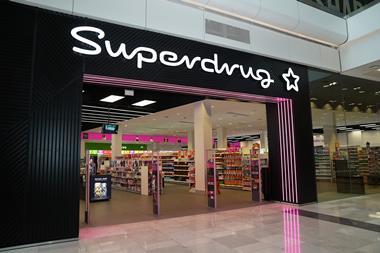Nadia Barmada, growth strategist at Linnworks, has a trio of strategies to help retailers keen to emerge strongly from the pandemic.
The pandemic has seen many impressive year-on-year sales growth numbers for online retail and ecommerce. Recent consumer research by Linnworks found that three in four shoppers will continue to buy online more than they did before the pandemic and 76% say convenience is now the top priority when selecting a retailer.
Retailers now need to be wherever their customers want to shop. Those online retailers that do adapt to these new consumer expectations will be in prime position to drive growth and capture market share via a “total commerce” approach to their selling strategy.
Linnworks has identified three key opportunities for businesses to win in this new, effortless economy:
1. Expand into marketplaces
The past 18 months have delivered a massive expansion in revenue and turnover for marketplaces, as consumers look for platforms where they can shop in multiple categories seamlessly.
Linnworks consumer research found that nine out of 10 shoppers regularly started product searches on marketplaces, while figures from Mirakl show marketplaces grew 80% in the final quarter of 2020, twice the growth rate of other ecommerce channels.
“The key for a brand is discovering where to find its core audience”
The benefit of marketplaces is they offer retailers instant access to a large audience of shoppers with intent, so the key for a brand is discovering where to find its core audience.
Huge marketplaces like Amazon, eBay and Walmart suit retailers that sell everyday items to shoppers wanting to purchase from multiple categories in one basket.
The alternative for specialist retailers is marketplaces that cater to one vertical, like Asos for fashion or Wayfair for furniture. The added benefit of marketplaces is that they offer ready-made international audiences, allowing you to test markets in new countries at lower risk.
However, there are a few challenges for businesses that want to sell via marketplaces.
Firstly, a product and pricing strategy specifically for your marketplace channels should be considered to protect your brand. Also, marketplaces are driven by fast customer service options like next-day delivery so retailers need to have back-end and fulfilment processes in place that can service these requirements.
2. Sell direct to consumers
Selling directly to your customers (D2C) via your own website allows you to maintain control over your retail brand, keeps ownership of the relationship with your customers and their data, and provides a brand presence.
D2C retailing can complement marketplace selling and provide the focal point for your brand and customer loyalty programs.
In addition, data from shopping behaviours can provide a wealth of information for building customer loyalty, acquiring customers and product development.
There is a different set of costs that accompany selling direct – marketing and promotion to acquire customers will be higher than marketplaces, but this is offset by higher revenues via direct sales. Also nurturing your customer relationship can deliver higher basket values and more frequent orders.
3. Social commerce
The total commerce strategy of being wherever your customers want to shop goes beyond your website and into shoppers’ everyday lives via their social channels. Social commerce was worth more than £340bn in 2020 and is set to grow exponentially as social platforms develop their ecommerce capabilities.
“The era of total commerce – selling wherever your customers want to shop – is here”
Finding your audience in social channels can be a matter of an effective test-and-learn strategy as they offer deep targeting options based on the high volume of data they have on their users.
User-generated content and influencers are the key drivers of engagement and reach in social channels, so strategies to acquire and engage shoppers will be different from other marketing channels.
The era of total commerce, or selling wherever your customers want to shop, is here. Retailers that adapt to a multichannel selling strategy to deliver seamless consumer experiences will be the winners in the new, effortless economy.
For more information, download our total commerce guide to growth.
Nadia Barmada is growth strategist at Linnworks

Nadia Barmada has worked for a range of global brands across many industries including Getty Images, BT, Nike, STA Travel and Barclays, executing content and growth strategies for both B2B and B2C audiences.
With more than 15 years of international experience, Nadia has a track record of maximising performance from content and communications strategies delivered across owned, earned and paid digital channels.




























